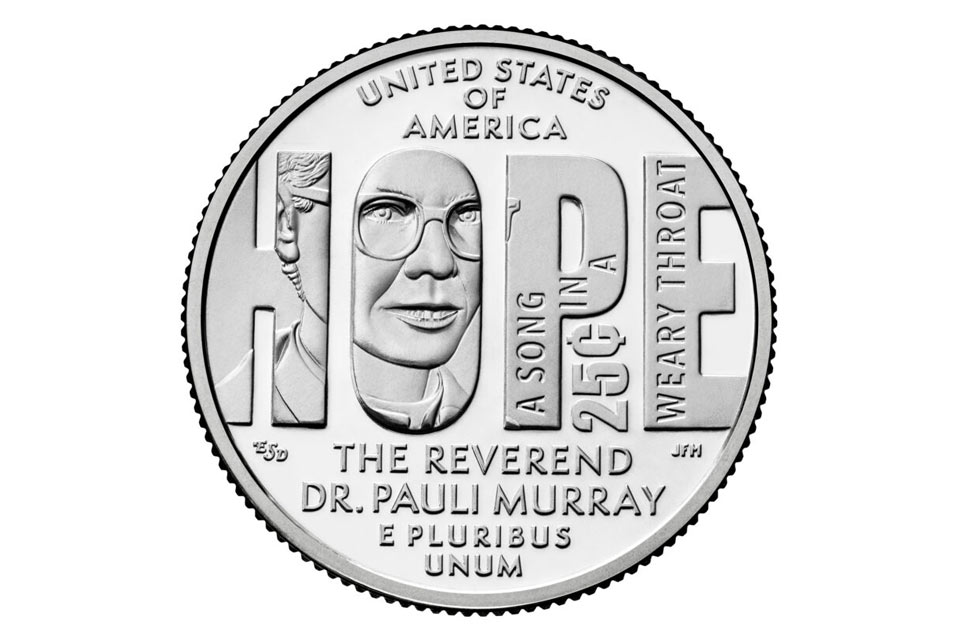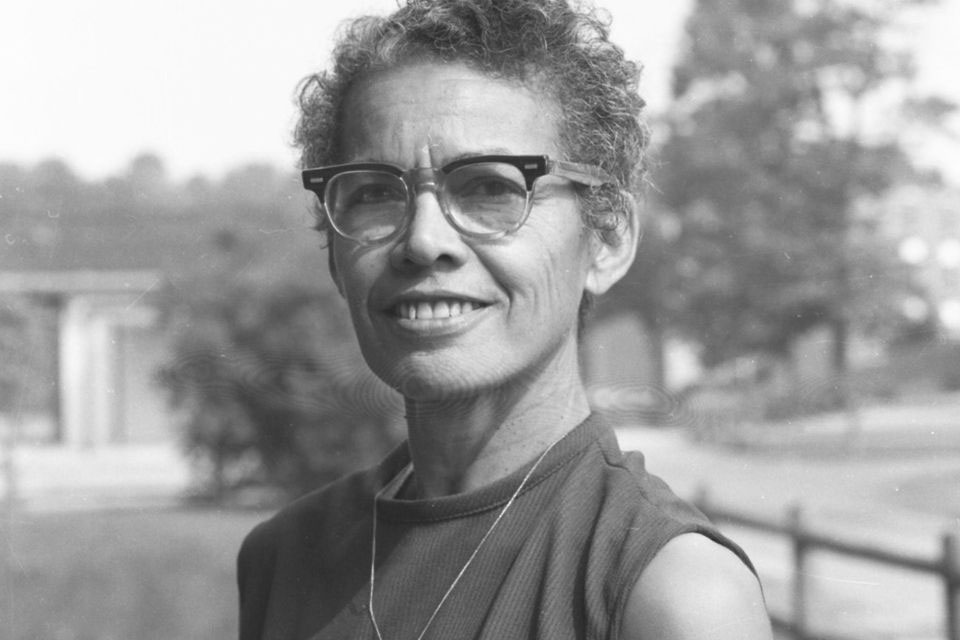Pauli Murray, Civil Rights icon and former professor, to appear on American Quarter
By Julian Cardillo

Photo Credit: U.S. Mint
Dr. Pauli Murray, a hero of the civil rights movement who served on the Brandeis faculty from 1968-73, will appear on the 11th coin circulated by the United States Mint as part of the American Women’s Quarters Program in 2024.
The coin depicts Murray’s eyeglass-framed face within the shape of the word “Hope” on the coin’s tails side. A verse from her poem “Dark Testament” that reads, in part, “A song in a weary throat” also appears on the coin as a nod to Murray’s use of prose in her scholarly work to opine about the meaning of hope.
Born in Baltimore in 1910, Anne Pauline Murray went on to become an activist, thought leader, and visionary across several areas of American society. She died of cancer in 1985.
“As the famous historian Susan Ware points out, ‘all roads lead to Pauli Murray in the 20th century’,” said Professor Emerita Joyce Antler, who, like Murray, taught American studies at Brandeis.
“At every intersection, no matter where you look — law, politics, poetry — there is Pauli. Her thinking and activism changed the world in the way we look at civil rights, women’s and gender status, human rights, education, and on and on. Her canvas was very broad,” Antler said.
A friend and colleague of the late Supreme Court Justice Ruth Bader Ginsburg, Murray’s writings on “separate but equal” formed many of the key arguments conveyed in Brown v. Board of Education, the Supreme Court case that ended school segregation in 1954.
Murray was the first Black woman priest ordained in the Episcopal Church. She co-founded the National Women’s Organization and the Congress for Racial Equality, a prominent civil rights organization that empowers people regardless of race, creed, age, sex, disability, ethnicity, or religious background.
“After her death, there was speculation about how she saw herself in terms of gender and sexuality,” Antler said. “It wasn’t a simple one-word answer for her. She bridged many ways of being.”
Murray worked at every level of society, using an array of talents to move and inspire. What sets Murray apart, according to Antler, was her ability to make real progress and affect change.
“Above all, she was an activist,” Antler said. “She was a visionary who had ideas about how we should change our institutions. But she was pragmatic and skilled enough as an organizer to make it happen.”
Murray joined Brandeis in 1968 as a visiting professor in American Civilization. She helped turn American studies from a program into a department. She created the first Legal studies, African and African American studies, and Women’s, Gender, and Sexuality studies courses at the university.
“The more figures like Pauli we can put into our daily lives, the better.”
Professor Emerita Joyce Antler
Murray advocated for the inclusion of gender studies in the curriculum, and fought against what she saw as prejudice against women faculty and staff, even filing a complaint against Brandeis with the U.S. Equal Employment Opportunity Commission for violating Title VII of the Civil Rights Act of 1964.
Murray’s legacy will reach new heights as she is commemorated on the quarter. It is a major spotlight for a historical figure often described as an unsung hero of the civil rights movement.
“I think it’s terrific that when people flip heads or tails they’ll see Pauli and maybe go on to learn something about her,” Antler said. “The more figures like Pauli we can put into our daily lives, the better.”



